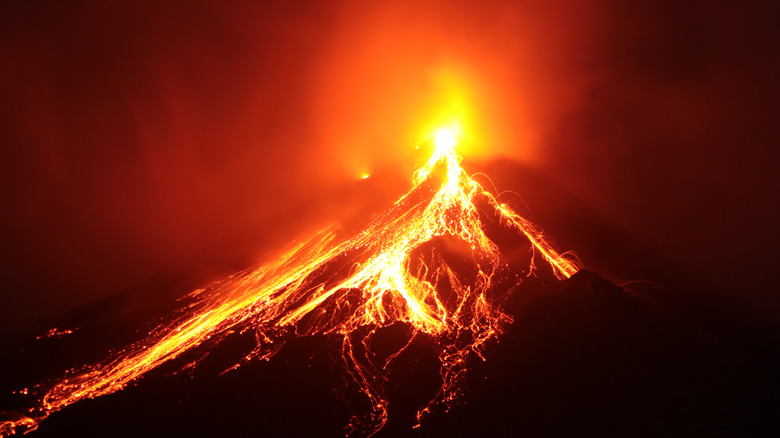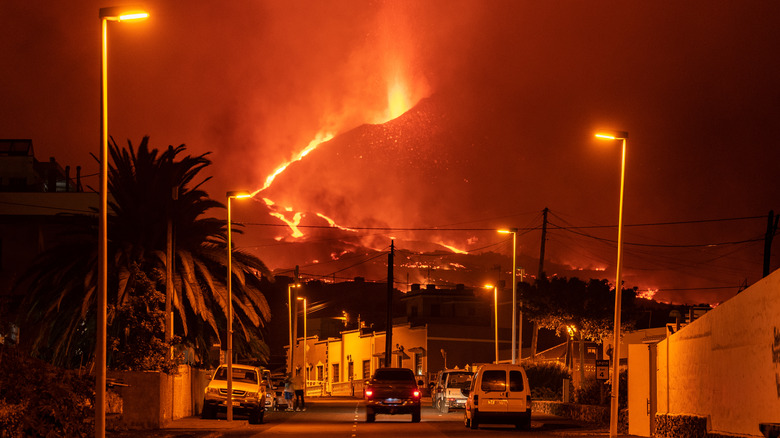This Mountain In Indonesia Is One Of The Most Dangerous Places In The World
In case anybody needs any happy reminders, all of human life nestles on slippy-slidey sheets of tectonic stone coasting atop a volcanically active timebomb. Eon by eon, our flaming, liquid-iron core solidifies as gases churn and roil up through Earth's layers, core to mantle to crust. Sometimes, these gases need release, and like a pimple on the planet's face, volcanos go "pop." They eject continental plumes of searing, miles-high ash, or ooze incendiary magma that bulldozes entire cities easier than you or I could wipe a table clean of crumbs. Just ask Pompei. Or more recently, ask the poor folks who live on the Canary Islands southwest of Spain (via NPR).
Or ask folks who live near Mount Sinabung in northwestern Indonesia, dead west from the Malaysian capital, Kuala Lumpur. Global News on YouTube has footage from the March 2021 eruption, which starts as little spritzes of gray and escalates into a massive, liquid-looking cloud of ash descending like a bedsheet. As the Indian Express says, a later May detonation sent ash three kilometers (almost two miles) into the sky, and it was the 16th in a week-long series of smaller detonations. 30,000 locals were evacuated, as Asahi Shimbun reports, and could do nothing but stare as their homes and livelihoods were ruined.
Mount Sinabung leaped back to life in 2010 after a 400-year era of silence, as a report from the 2017 International Conference on Environmental Systems Research states. It hasn't quieted since.
A lethal zone in the Ring of Fire
As a 2017 International Conference on Environmental Systems Research says, Indonesia is a "disaster-prone country." Its location along the Pacific Ocean's Ring of Fire — a band of tectonic plate junctures that encircles the entire Pacific Ocean — makes it and its neighboring countries particularly vulnerable to volcanoes, earthquakes, tsunamis, and more. For Indonesia, such geological activity can prove disastrous to their largely farming-based economy. Mount Sinabung is situated in the middle of the Northern Sumatran jungle, which the city-sheltered might recognize from Starbucks' coffee offerings if nothing else. Fruit plants suffer the most, as well as staples like rice and maize (corn).
Much of the danger from Mount Sinabung comes not from flaming lava flows, but ash. Ash suffocates the soil, buries houses, and saturates streets till they become untraversable. Ash can also be wind-carried across entire oceans and deposited elsewhere. In fact, this is exactly what annihilated the dinosaurs when the "Chicxulub impactor" asteroid hit, not tsunamis. In one burst, 10,000 billion tons of carbon dioxide, 100 billion tons of carbon monoxide, and 100 billion tons of methane got sent up into the atmosphere, as National Geographic explains. Toxic rains and a nuclear winter finished the job. At worst, this is also what a volcano could do.
Ironically, as National Geographic explains, volcanoes are also the reason why we've got land to walk on at all. 80% of Earth's surface was lifted and shaped by their power.

